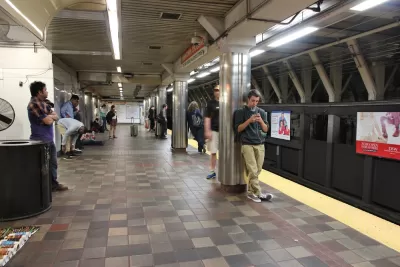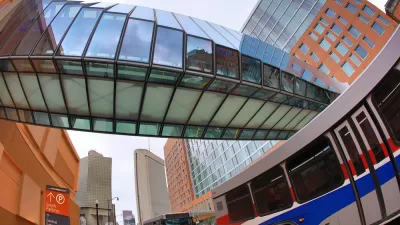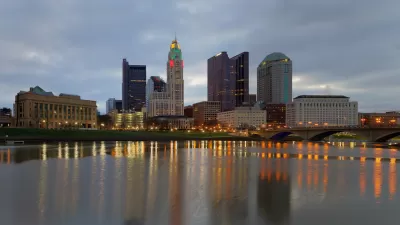The city of Boston will undertake an experiment about how to center public transit as an economic recovery tool.

"The City of Boston is offering a free public transit pilot for up to 1,000 employees who work in five of the city's Main Street districts," reports Cailin Crowe. Main Street districts are recognized by the city of Boston as the commercial centers of local neighborhoods.
"Pilot participants will receive a pre-loaded Massachusetts Bay Transportation Authority (MBTA) pass with $60, and other participants will receive two cards after four weeks that will be worth up to $60. The city will also offer free passes for unlimited rides through the Bluebikes bike-share program," adds Crowe for detail about the scope of the pilot program.
Crowe also reports that Acting Mayor Kim Janey is presenting the pilot project as one effort toward post-pandemic recovery in the city. Meanwhile, the MBTA in March implemented another round of service cuts to the transit system in response to declining fare revenues during the pandemic, despite facing criticism for the cuts.
The city of Columbus, Ohio is the poster child for free fares targeted to specific populations of workers. The Central Ohio Transit Authority recently extended its "C-pass" program, in place since 2018, until 2025.
FULL STORY: Boston pilots free public transit in bid for equitable COVID recovery

Manufactured Crisis: Losing the Nation’s Largest Source of Unsubsidized Affordable Housing
Manufactured housing communities have long been an affordable housing option for millions of people living in the U.S., but that affordability is disappearing rapidly. How did we get here?

Americans May Be Stuck — But Why?
Americans are moving a lot less than they once did, and that is a problem. While Yoni Applebaum, in his highly-publicized article Stuck, gets the reasons badly wrong, it's still important to ask: why are we moving so much less than before?

Using Old Oil and Gas Wells for Green Energy Storage
Penn State researchers have found that repurposing abandoned oil and gas wells for geothermal-assisted compressed-air energy storage can boost efficiency, reduce environmental risks, and support clean energy and job transitions.

Greening Oakland’s School Grounds
With help from community partners like the Trust for Public Land, Oakland Unified School District is turning barren, asphalt-covered schoolyards into vibrant, green spaces that support outdoor learning, play, and student well-being.

California Governor Suspends CEQA Reviews for Utilities in Fire Areas
Utility restoration efforts in areas affected by the January wildfires in Los Angeles will be exempt from environmental regulations to speed up the rebuilding of essential infrastructure.

Native American Communities Prepare to Lead on Environmental Stewardship
In the face of federal threats to public lands and conservation efforts, indigenous groups continue to model nature-centered conservation efforts.
Urban Design for Planners 1: Software Tools
This six-course series explores essential urban design concepts using open source software and equips planners with the tools they need to participate fully in the urban design process.
Planning for Universal Design
Learn the tools for implementing Universal Design in planning regulations.
Heyer Gruel & Associates PA
City of Moreno Valley
Institute for Housing and Urban Development Studies (IHS)
City of Grandview
Harvard GSD Executive Education
Salt Lake City
NYU Wagner Graduate School of Public Service
City of Cambridge, Maryland





























